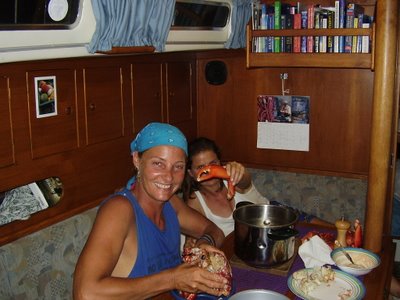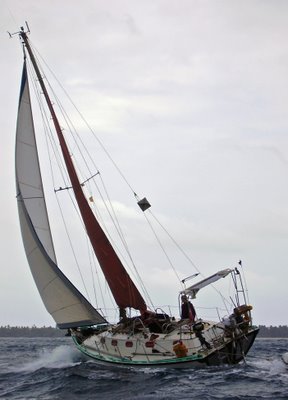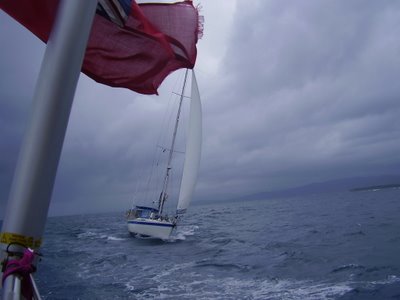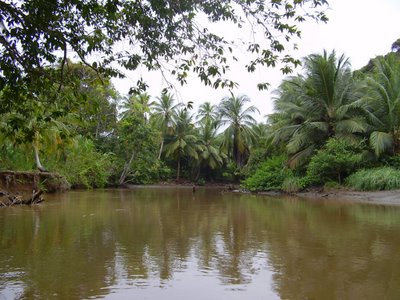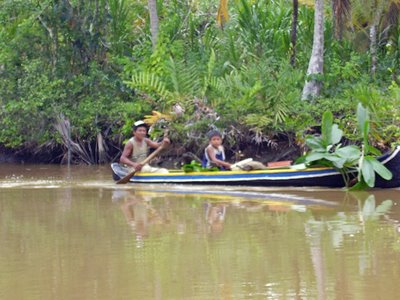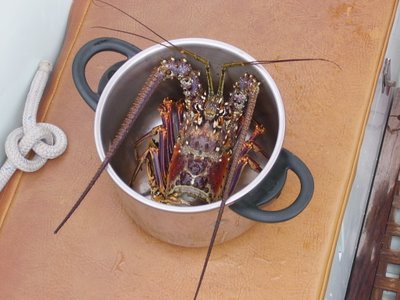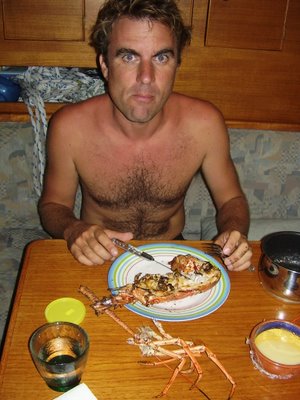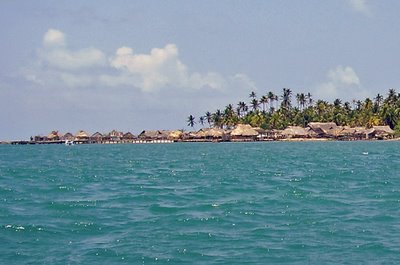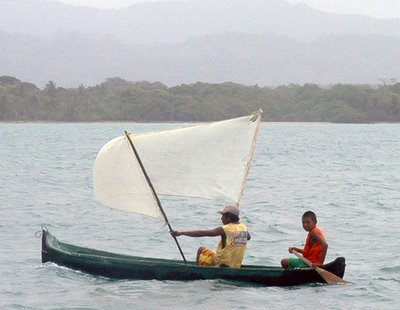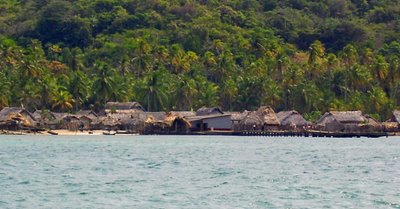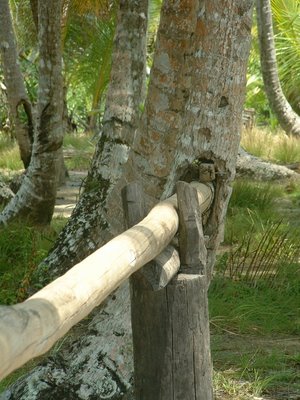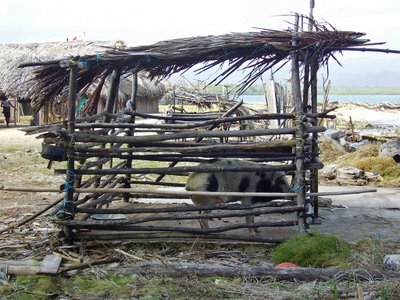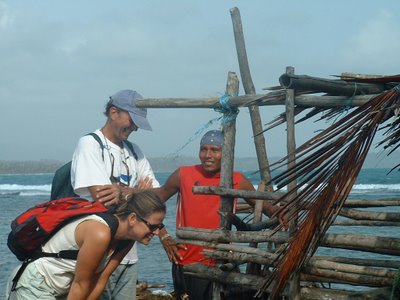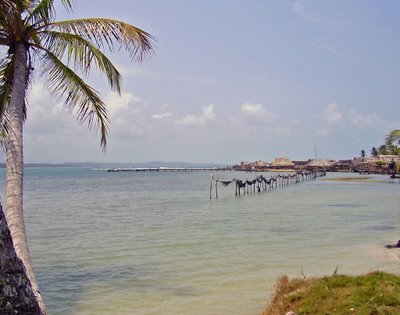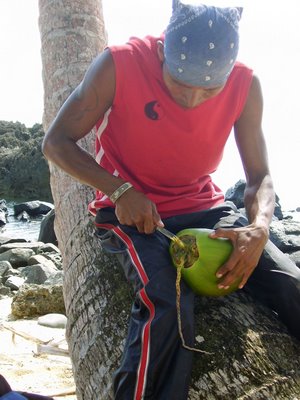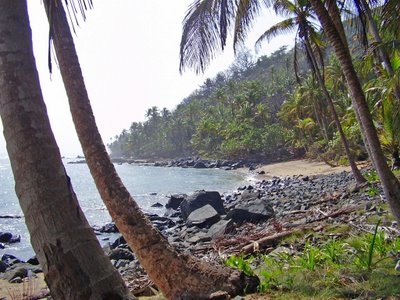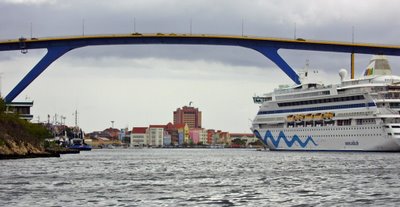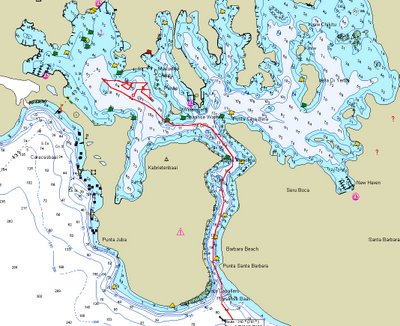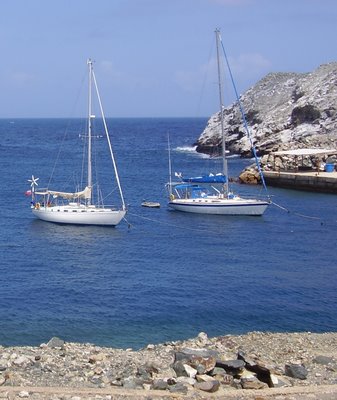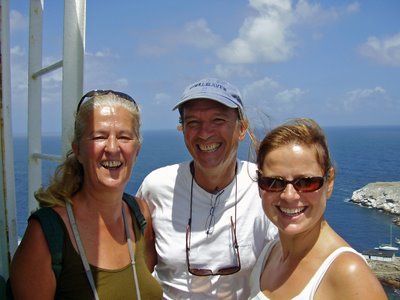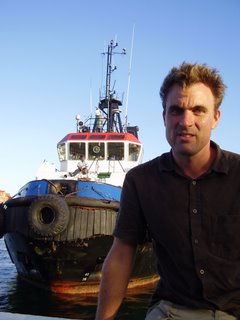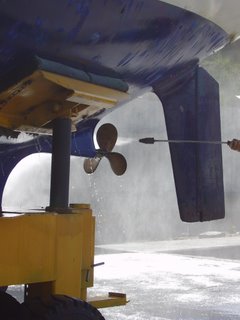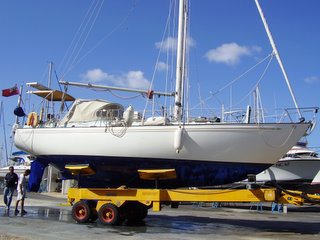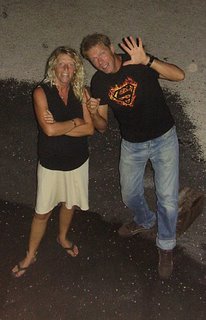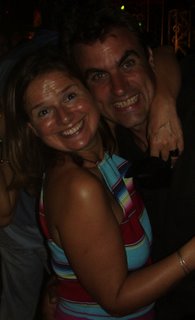Our stay in
Ailigandi was wet but interesting. The weather has been pretty dismal since the last update and the boat is a little damp but things seem to be brightening up. We had torrential rain the day after we arrived and took the opportunity to have a good shower, wash some dirty clothes and then fill our jerry cans by bunging up the side deck and syphoning off the water. Since then the boat has been draped with damp clothes and I fear we will smell like unkempt students (old hat for Nick, first time for me!) for the next week.
That afternoon, we rowed to shore with Ouf and went for lunch at the Kuna Cafe. It is run by a group of Kuna retirees, a few of whom were there, counting money from jars of various shapes and sizes. It was very rustic and though I was hungry, I was a little wary. There was a strange, unhygienic smell emanating from somewhere nearby - I did a nasal investigation as unobtrusively as possible - was it the wooden benches we were sitting on? No. How about the PVC floral table cloth, sure to be harbouring a plethora of undesirable bacteria? No, clean as a whistle. Was it the bamboo walls, held so carefully and neatly together with binder-twine? Nothing suspect there. Then it must have been the shabby concrete floor with some dubious unsavoury spillages? Not a whiff. Where was it coming from? Realisation came with relief and then shock. Nick had been sitting next to me throughout and on close nasal inspection he was verified as the origin of the odour. Thankful (sort of) that the all clear had been given to the cafe, I tucked into my meal of chicken and rice with mucho gusto.
It was warm but truly delicious and we had an enjoyable chat in broken Spench to the proprietors. Ouf can speak Spanish which is very annoying as, of course, their French is pretty good too! Nick's Spench is certainly becoming more Spanish and his confidence is growing. I have started learning Spanish and am encouraged by the little I know already - it goes a long way specially if you couple it with mime.
While we were in the cafe, we deliberated over the problem of Michele's (from Ouf) foot. He had stepped off the top deck while on passage the day before and had twisted it badly, straining and possibly breaking some tendons. It so happens, that Ailigandi has the most sophisticated clinic in the San Blas, and having spoken to the restauranteurs and got the herbal remedy for a swollen foot (an immersion of mint in alcohol) we went to the clinic in search of the alcohol. Our group (a limping white man, using a white man and woman as crutches with another white woman asking all and sundry the way) had a Pied Piper effect on the children of Ailigandi.
We arrived at the clinic with about 20 children milling around us. A wheelchair was hastily found for Michele who was wheeled up the ramp, and seemingly straight to the front of the queue, the chair stopping with a small screech of brakes. Amazingly all the children came in too. They didn't go into the consulting room (though I think they would if they had the chance) but sat outside on the waiting benches with Nick and I for about 45 minutes.
During this time, they answered a few questions, played and smiled mostly, occasionally touching us lightly. The clinic was excellent. It turned out that one of the TWO doctors who saw Michele had been invited to France, as an English speaking Kuna doctor, and had met Jaques Chirac! Michele was given some anti-inflammatories and a foot splint, and sent on his way with his human crutches and swarm of children.
On Friday morning we had torrential rain once again and as I had poked my head out from under the spray hood, I spotted a dolphin which reappeared and just seemed to be happily milling about the anchorage looking for lunch. During a gap in downpours, Nick and I set off to explore the nearby river. We had to row as the outboard is not behaving itself, and also, it meant that we could see/hear more creatures. Rowing was tough as there was quite a strong current against us but we soon realised it was a very special place and persevered.
We saw black herons with green legs, buzzards, a large, noisy kingfisher and little crabs on the banks waving their one oversized claws in some kind of ritual which we didn't disturb in our silent vessel. We also saw Kuna people who rowed up behind us in their painted dugouts with their one paddle, and overtook us with a nod and a smile.
The river meandered considerably and, both fired up from what we had already seen, we flexed our muscles and ventured further inland. We rowed past a Kuna cemetery (palm roofs covering well-tended mounds) and found avocado, mango and banana trees amongst the cocunut palms and hibiscus. When our arms were aching, we stopped rowing and just glided back down the river, silently and surprisingly slowly so that we had ample time to listen and watch. Just before we reached the mouth of the river, I looked to the bank and saw an unusually shaped log, which could have been mistaken for a crocodile (something I had been doing ever since reading that small fresh water crocs are to be found in the San Blas) and then it flicked its loggy tail and submerged. Wow!
Hunger saw us once again on the island later that day. We went to find some fruit and veg to go with the lobster that Ouf had bought from the fishermen. Our search took us right into the island and it wasn't long before we were lost and wondering if 'no go' areas exist in Kuna country. We had that horrible experience of seeing a building/road you think is familiar but then all too soon you realise it's slighly different and it's taken you further out of your way. It was discomfiting as we felt we were intruding in certain areas and we became very conscious of our 'strangeness'. It only lasted minutes, however, just ask the nearest child the way and not only will they point, but they will take you there with 20 of their friends and stand and watch you as you struggle with an undignified scramble into your dinghy which is by now impossibly low down in the water. Dinghys are a great leveller.
Having decided that other interesting anchorages beckoned, we raised the hook yesterday morning and motor-sailed here to
Ratones Cays - a small uninhabited island with good snorkelling. As soon as we had arrived, we were visited by some fishermen who had lobster to offer, which we accepted for a small fee.
(Oh no, not lobster again!) Nick is enjoying his fresh seafood but I know that he is longing to be catching it himself because then it will taste so much better.
Later we headed out in the dinghy to explore the reef which was pretty impressive. Nick spoke to a Kuna man who had come to the island to spearfish in the shallows (our hero was duly very impressed and if the weather was better today, I swear he would be fashioning his own spear from a palm trunk). The fisherman had found a conch and gave it to Nick as a 'regalo'. Conch are notoriously difficult to winkle out of their shells but 'No Mercy Nick' winkled and winkled this morning and with the help of quite a large part of the cutlery drawer and a mallet, he succeeded and had conch in garlic for breakfast. Delicious! (It was really pretty good!)
Today looked brighter so I put all the damp washing out to dry, but a black cloud was watching me and no sooner had I stowed the peg bag, than a torrential downpour was upon us. Quicker than you could say 'Oh, for a washer-dryer and a stack of Ariel Ultra' everything was drenched once again. Still, the Panama Yacht club is reputed to have an excellent laundry! Bring it on!

